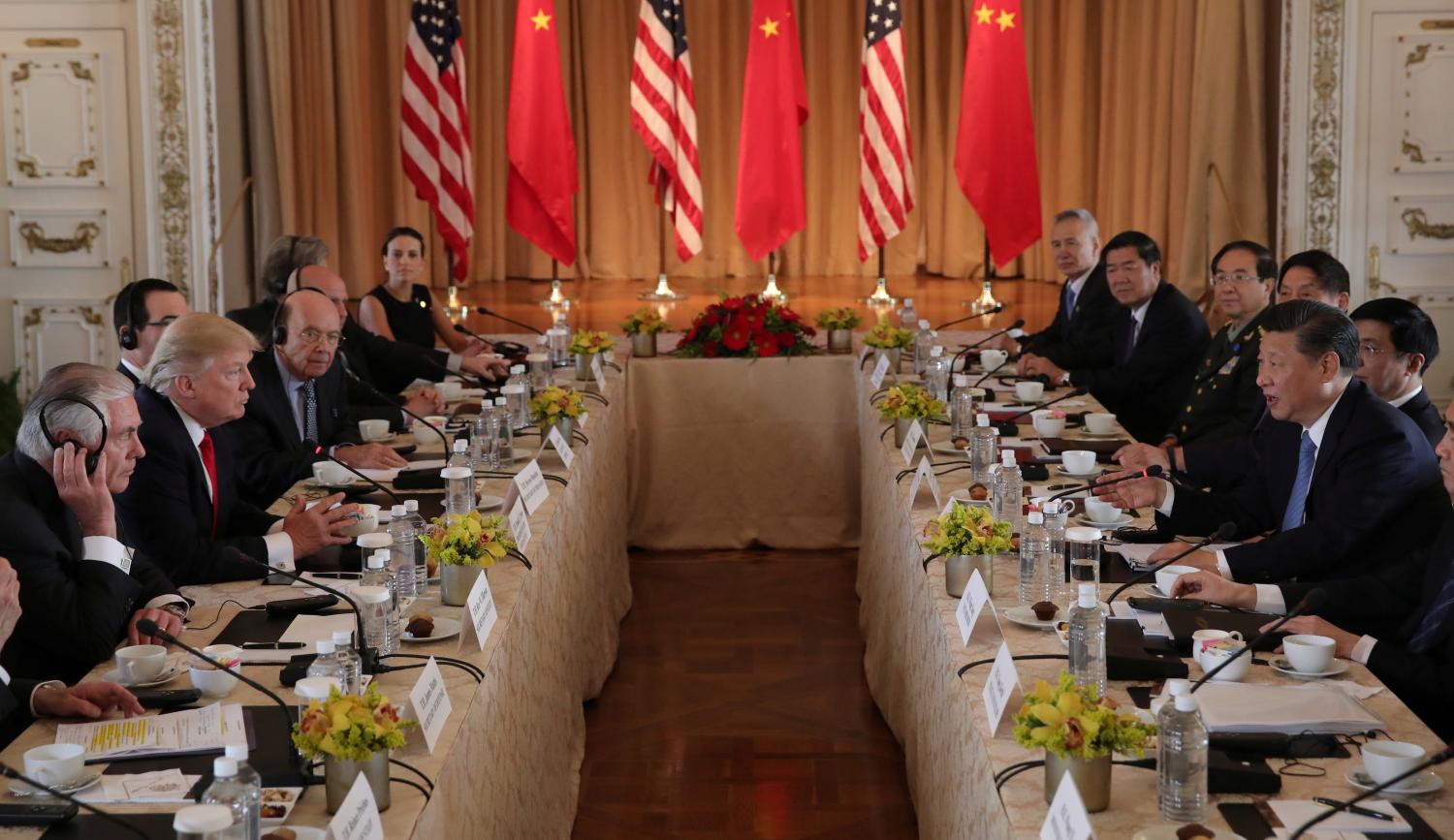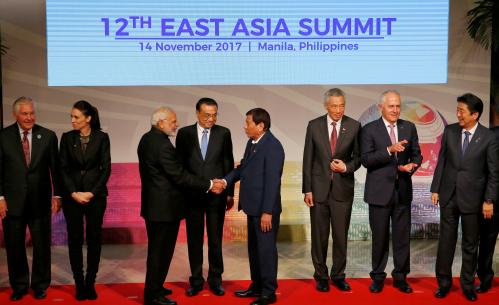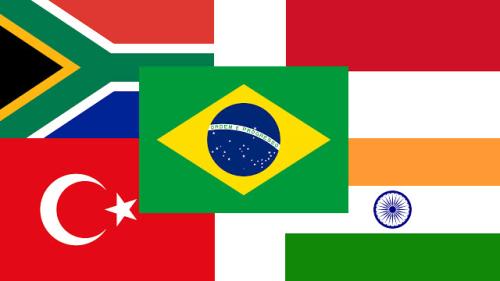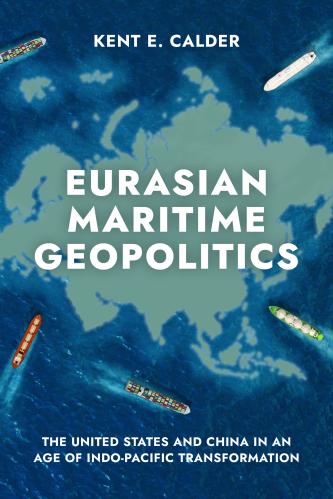At the East Asia Summit (EAS) two weeks ago in Singapore, regional leaders discussed various Indo-Pacific visions, from the Belt and Road Initiative (BRI) to the Free and Open Indo-Pacific (FOIP). ASEAN is also proposing its own Indo-Pacific vision based on key principles such as ASEAN centrality, openness, transparency, inclusivity, and a rules-based regional architecture.
Indonesia has been the key driver behind that vision. It proposed a distinct ASEAN Indo-Pacific approach at a foreign ministers’ retreat in January and has led the discussion since then. This suggests that Jakarta is uncomfortable with existing Indo-Pacific visions proposed by regional powers and offers an alternative ASEAN-centric vision instead.
That Jakarta promotes its Indo-Pacific vision through ASEAN also indicates Indonesia’s lack of diplomatic, economic, or security resources to independently shape the region. Indeed, since President Joko “Jokowi” Widodo came to office in 2014, Indonesia has been buck-passing its regional leadership through ASEAN. The United States’ Indo-Pacific strategy should account for these realities.
ASEAN’s Indo-Pacific Outlook
The ASEAN Indo-Pacific “Outlook” concept—drafted by Indonesia and circulated to other members—sees the Asia-Pacific and Indian Ocean regions as a closely integrated and interconnected theater. The Outlook seeks new momentum for ASEAN centrality by strengthening existing ASEAN-led mechanisms, not creating new ones.
Unlike other conceptions defining the Indo-Pacific through common values such as democratic norms, the Outlook emphasizes common interests such as development and prosperity. It also prioritizes cooperation in the maritime domain, on regional connectivity, and in the area of the United Nations’ Sustainable Development Goals.
Finally, the Outlook seeks to “strengthen and prioritize” the EAS. The EAS is envisioned as the premier decisionmaking venue for strategic Indo-Pacific concerns, leaving practical cooperation to be implemented or pursued by other bodies such as the ASEAN Regional Forum and the ASEAN Defense Ministers’ Meeting Plus.
The Outlook offers an alternative Indo-Pacific vision different from, but not mutually exclusive of, other visions such as the BRI or FOIP. Its basic principles are commonly accepted—the goal is regional inclusion after all—but emphasizes multilateralism through the EAS.
Pragmatic equidistance and buck-passing
The Outlook reflects Indonesia’s long-standing concern that Southeast Asia could become another playground for great power politics. It is unlikely then that Jakarta would publicly sign on to either America’s FOIP or China’ BRI.
This doesn’t prevent cooperation on areas of common interests, such as maritime security or infrastructure development. That Washington or Beijing may see such cooperation as an “endorsement” of their respective Indo-Pacific visions is their prerogative, but Jakarta would not see it as such.
When it comes to its great power relations, Indonesia prefers “pragmatic equidistance”: maintaining strategic autonomy by engaging one great power in wide-ranging cooperation without sacrificing its relationship with another. Indonesia’s Indo-Pacific vision thus charts a middle course between competing geopolitical visions.
Indonesia’s Indo-Pacific vision thus charts a middle course between competing geopolitical visions.
That Indonesia decides to run that course through ASEAN, however, indicates its continuing lack of diplomatic, security, or economic resources to independently shape the region.
The foreign ministry has a miniscule budget (averaging around $305 million between 1999 and 2014). The military is a decade away from completing its Minimum Essential Force as its growing budget has gone to personnel spending. And whatever benefits come from economic growth is needed to address inequality and development at home.
Outside of ASEAN, Indonesia doesn’t have the capacity for geopolitical powerplays. Nor does Jokowi seem personally interested in them. His foreign ministry initially focused on low-key policies, such as the protection of citizens abroad (dubbed “down-to-earth” or “pro-people diplomacy”) and its 2015–2019 strategic planning document mentioned the Indo-Pacific once.
Indonesia’s Indo-Pacific vision as promoted through ASEAN isn’t a sign of regional or global leadership many have rooted for. It is instead a sign of persistent weakness.
Implications for the United States
ASEAN’s Indo-Pacific Outlook is far from perfect—it is ill-suited for pressing strategic challenges like maritime disputes in the South China Sea. But it offers the most inclusive baseline and thus the best chance for regional buy-in. An Indo-Pacific beset by dueling exclusionary visions will fracture the region.
Many in Southeast Asia might also consider the U.S. support for ASEAN’s Indo-Pacific Outlook as another benchmark of American long-term commitment to the region. Security guarantees and defense partnerships will only go so far.
Washington also needs to put more economic and political resources into ASEAN as a long-term strategy beyond its competition with China. Publicly supporting and funding the institutionalization of the EAS—by creating an executive council or secretariat, for example—and having the U.S. president attend its meeting is an important step. Another would be to fill the currently vacant ASEAN ambassador post and expand the activities and resources of the U.S. mission to ASEAN.
Finally, the United States needs to refocus its energy on the 2015 U.S.-Indonesia Strategic Partnership framework.
Under the Trump administration, security concerns—from China to arms sales to counterterrorism—dominate the bilateral narrative coming from Washington. But for Jakarta, the U.S.-China trade war and the U.S.-Indonesia trade deficit loomed large. Re-energizing the Strategic Partnership might help close this strategic perception gap.
U.S. engagement strategy in the Indo-Pacific requires a buy-in from the region and ASEAN provides the most inclusionary platform to that effect. In other words, a more credible signal of strategic commitment is by endorsing an ASEAN-led Indo-Pacific than pushing for FOIP alone. Any long-term ASEAN strategy, in turn, requires a more strategic and less transactional approach to U.S.-Indonesia relations.
The Brookings Institution is committed to quality, independence, and impact.
We are supported by a diverse array of funders. In line with our values and policies, each Brookings publication represents the sole views of its author(s).










Commentary
Buck-passing from behind: Indonesia’s foreign policy and the Indo-Pacific
November 27, 2018